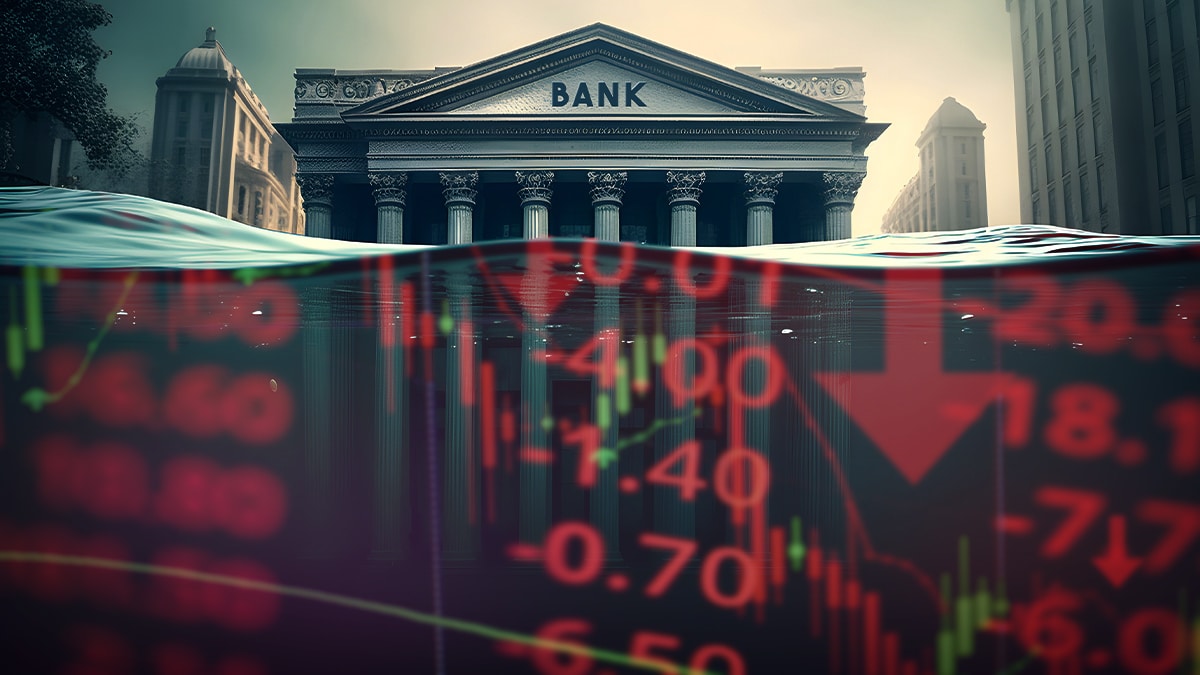The increase in public spending and worrying labor market figures in the United States are beginning to raise alarm bells about a possible economic crisis.
According to a analysis from ‘The Kobeissi Letter’ think tank, federal government spending recorded an increase of 9.7% in the third quarter of 2024compared to the previous quarter, representing the largest jump since the first quarter of 2021.
This growth has been driven by 14.9% increase in defense spendingthe highest figure in 21 years.
Since 2020, public spending has grown by 30%, reaching a new record of $5.04 trillion.
This significant spending has been one of the main drivers of GDP growth over the past two years, contributing to economic growth for nine consecutive quarters.
In the first graph you can see the spending of the federal government and in the second the defense expenses.

However, the Kobeissi group of analysts warns that public spending is “at crisis levels.”
The amount of this debt consumes an increasing portion of the budget, limiting the government’s ability to invest in key areas such as education, infrastructure and social programs. If the debt continues to grow at this rate, there is a risk that the United States will lose its ability to pay, which would have serious consequences for the economy.
Increased public spending can fuel aggregate demand, which, in a context of limited productive capacity, can generate inflationary pressures. Therefore, inflation weakens the purchasing power of the currency, affecting consumers and businesses.
The panorama of the labor sector worsens
The situation in the labor market further aggravates the situation, Kobeissi points out.
In October, The US economy lost 28,000 private jobsmarking the first net loss since December 2020.
Furthermore, the three-month moving average has dropped to 67,000, the lowest level since the 2020 pandemicas seen in the following graph.

This figure is alarmingly lower than the average of 150,000 new monthly private payrolls recorded in 2018-2019, before the pandemic hit hard.
The decline in full-time jobs is equally worrying, with a decrease of 1.5 million in the private sector in year-on-year termssays the analysis.
“Never before has such a pronounced decline in full-time private employment been observed outside of periods of recession,” the Kobeissi report states.
“The labor market may not be as strong as it seems,” explains Kobeissi, underscoring the fragility of the macroeconomic environment in the United States.
What’s next for bitcoin in a context of crisis?
In the midst of this context of economic uncertainty, questions arise about the behavior of digital assets, especially bitcoin (BTC).
If a complex scenario materializes, the digital currency, created by Satoshi Nakamoto, could show its strength as a reserve asset of value in times of financial crisis and would increase the “digital gold” narrative. Bitcoin has the potential to behave positively in adverse contexts for financial markets due to its inherent scarcity and decentralization.
In this sense, the recent BTC halving, which occurred in April of this year, could influence its price. Historically, in the months before and after this event, the BTC price experienced a new all-time high.
The event decreases the issuance of bitcoin, facilitating the rise in the price of the currency in response to demand. For this reason, it works as one of the bullish fundamentals of the market that attracts investors.
According to the Bitcoin Halving Cycle Profit, a TradingView indicator, the next bullish cycle could begin in January 2025, as reported by CriptoNoticias.
The elections in the United States
Another determining factor in the short term for bitcoin is the United States presidential elections.
If the Republican candidate and former president Donald Trump wins the elections scheduled for tomorrow, November 5there could be a significant change in the country’s economic policy.
Trump has promised to open his government to bitcoin and cryptocurrencies, which could translate into an increase in the price of these digital assets.
In fact, Bernstein analysts have estimated that the price of bitcoin could skyrocket to $90,000 if Trump is elected again, as reported by CriptoNoticias.
On the other hand, her Democratic rival, Kamala Harris, has not completely convinced the electorate supportive of cryptocurrencies. Although he has also made promises related to that sector, many investors believe that his possible government would be an extension of Joe Biden’s mandate, which has generated discontent among bitcoin enthusiasts.
Thus, a Harris victory may not benefit the price of bitcoin and other cryptocurrencies.
According to the site fivethirtyeight.comthe polls show a slightly favorable trend for Kamala Harris, as seen in the following graph.

However, analysts such as Charles Edwards, founder of the investment firm Capriole Investments they think that, Regardless of the outcome, there will not be a significant drop in the market after the election.
For him, a change in government, although it could cause an initial reaction, will not necessarily cause a market collapse, since investors have already incorporated this possibility into their decisions, Edwards points out.
For his part, Matías Dajcz, from Ripio, adds that, If Harris wins, it might not be good for the US economy and for the world, suggesting that bitcoin will have less bullish path and in a shorter period [que si gana Trump].
ETFs can boost bitcoin further
Spot bitcoin ETFs in the United States have been key to the rise in bitcoin prices, and their performance has been notable.
Last October, financial instruments achieved their second best month, after March. ETF holdings, together, now exceed one million BTC just under 10 months since its stock market launch.
The iShares Bitcoin Trust (IBIT), managed by BlackRock, leads in BTC management, and its net inflow of $872 million last Thursday has set a daily record, after it obtained $848 million last March, as can be seen in the following Soso Value graph.

Bloomberg ETF analyst Eric Balchunas express That 16 months ago, bitcoin was in a delicate situation, with a price of $35,000 and a tarnished reputation due to events such as the fraud of former CEO of the exchange FTX, Sam Bankman-Fried.
But BlackRock’s filing for a bitcoin ETF is considered by him to be a turning point. From that moment on, the price of bitcoin experienced a significant increase, reaching $73,800, the specialist highlights.
“ETFs are very powerful. It’s a bit silly to bet against that,” says Balchunas.
A rise in BTC may be driven by spot ETF management companies as they must buy and hold bitcoin in their treasuries to back their actions. This process of acquiring bitcoin to back spot ETFs creates direct and tangible demand in the market.
This, in turn, reduces the amount of bitcoin available on the open market, which may lead to an increase in price due to limited supply.
The influx of institutional capital not only brings large sums of money to the market, but can also increase confidence in bitcoin as a legitimate and valuable asset. This additional legitimacy attracts more investors, both institutional and retail, creating a positive cycle of investment and price growth.
Such a situation presents a complex panorama and full of uncertainty. The increase in public spending, the fall in private employment and the imminent elections are intertwined in a scenario that could lead to an economic crisis. Meanwhile, the digital asset community is watching closely, preparing for potential market reactions and fluctuations that could occur in an ever-changing environment.






Leave a Reply